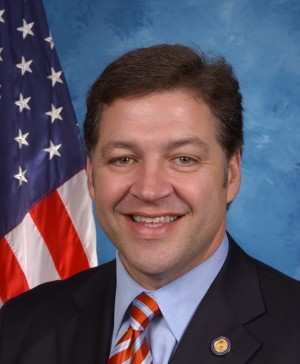Thu, Jan 21, 2016
Cost, Efficiency, & Modernization Expected Goals All Missed, According To Report
The Department of Transportation Inspector General has released a scathing report outlining numerous shortcomings of the FAA's efforts to implement reforms intended to help the agency operate more effectively and efficiently, improve the delivery of air traffic services, and modernize the U.S. air traffic control system.

The report finds that FAA’s efforts have fallen short of anticipated cost savings and operational efficiencies, as well as in improving the delivery of new technologies and capabilities.
“This report shows that the FAA simply isn’t suited to successfully modernize our Nation’s antiquated air traffic control system,” said Transportation and Infrastructure Committee Chairman Bill Shuster (R-PA) (pictured). “Over two decades of FAA personnel, organizational, and acquisition reforms have failed to slow the agency’s cost growth, improve its productivity, or improve its performance in modernizing the system. The FAA remains a vast government bureaucracy, not a high-tech service provider. It’s clear from the DOT IG’s findings that we need transformational FAA reform if we are going to have a safe, efficient, 21st century aviation system.”
The Inspector General’s report, requested by the leadership of the House Transportation Committee and its Aviation Subcommittee, says that although the FAA has implemented performance-based compensation systems, established the Air Traffic Organization (ATO), contracted out flight service stations operations, and reorganized multiple times over the years, costs continue to rise while operational productivity has declined. The FAA has also missed opportunities to complete large-scale facility consolidations that would maximize operations, improve the flow of air traffic, avoid the cost of maintaining aging facilities and facilitate the transition to NextGen capabilities.
Furthermore, major FAA air traffic control modernization projects continue to experience problems that delay the introduction of new technologies, postpone benefits to system users, and defer the retirement of costly legacy systems.
The Inspector General found that several underlying and systemic issues, including overambitious plans, shifting requirements, software development problems, ineffective contract and program management, and unreliable cost and schedule estimates, impact FAA’s ability to introduce new technologies and capabilities that are critical to transitioning to NextGen.
(Source: House Transportation Committee news release. Image from file)
More News
Circle To Runway (Runway Number) Used by ATC to inform the pilot that he/she must circle to land because the runway in use is other than the runway aligned with the instrument appr>[...]
Aero Linx: National Aviation Safety Foundation (NASF) The National Aviation Safety Foundation is a support group whose objective is to enhance aviation safety through educational p>[...]
At Altitude Of About 250-300 Ft Agl, The Airplane Experienced A Total Loss Of Engine Power On November 6, 2024, at 1600 central standard time, a De Havilland DHC-1, N420TD, was inv>[...]
From 2009 (YouTube Edition): Three Hour Flight Was 'Flawless' -- At Least, Until Mother Nature Intervened For anyone who loves the aviation business, this was a VERY good day. Afte>[...]
Also: AMA Names Tyler Dobbs, More Falcon 9 Ops, Firefly Launch Unsuccessful, Autonomous F-16s The Air Force has begun ground testing a future uncrewed jet design in a milestone tow>[...]
 ANN's Daily Aero-Term (05.05.25): Circle To Runway (Runway Number)
ANN's Daily Aero-Term (05.05.25): Circle To Runway (Runway Number) ANN's Daily Aero-Linx (05.05.25)
ANN's Daily Aero-Linx (05.05.25) NTSB Prelim: De Havilland DHC-1
NTSB Prelim: De Havilland DHC-1 Classic Aero-TV: The Boeing Dreamliner -- Historic First Flight Coverage
Classic Aero-TV: The Boeing Dreamliner -- Historic First Flight Coverage Airborne-NextGen 05.06.25: AF Uncrewed Fighters, Drones v Planes, Joby Crew Test
Airborne-NextGen 05.06.25: AF Uncrewed Fighters, Drones v Planes, Joby Crew Test



